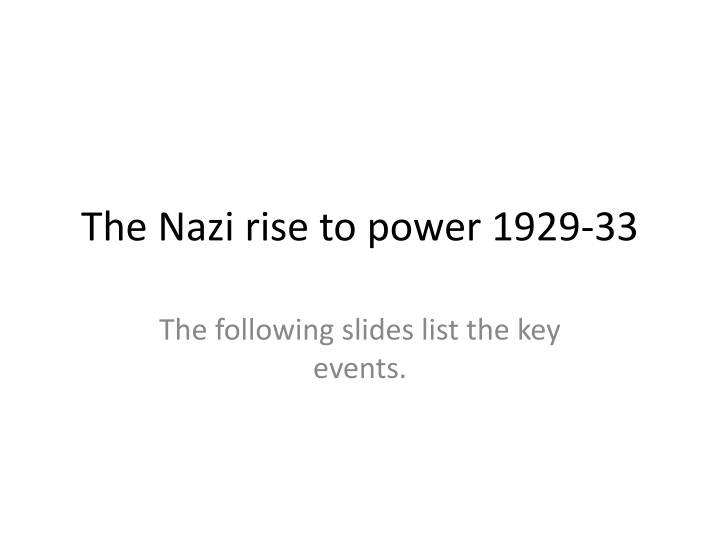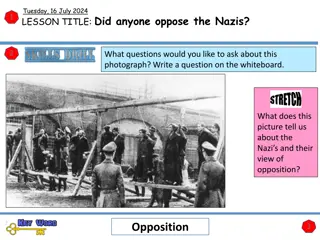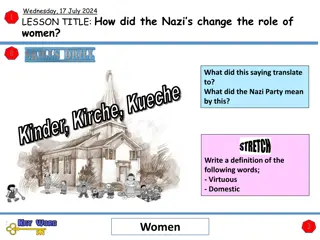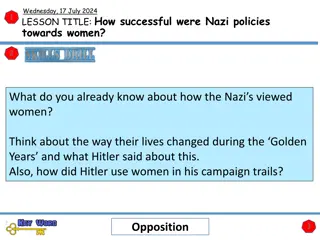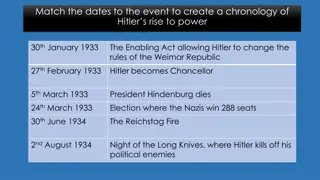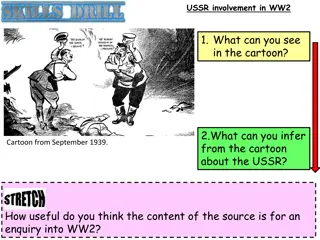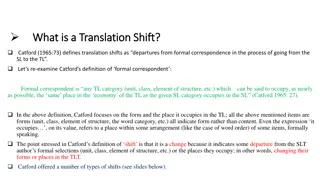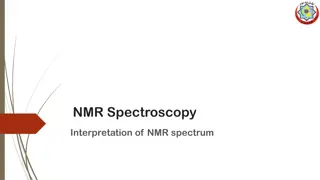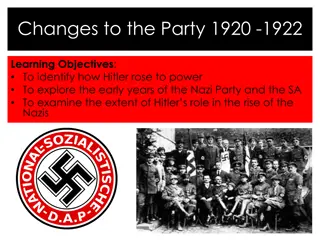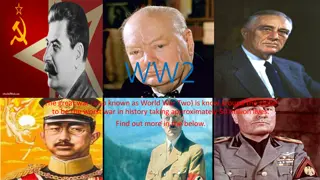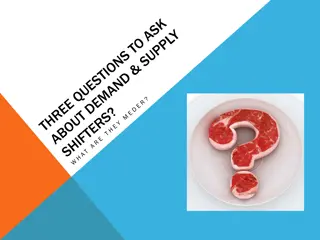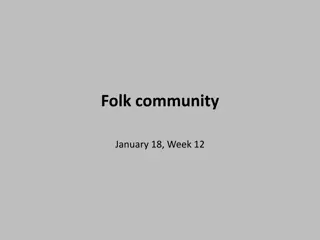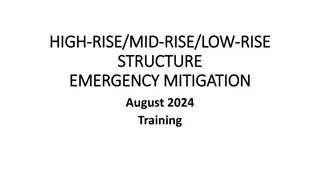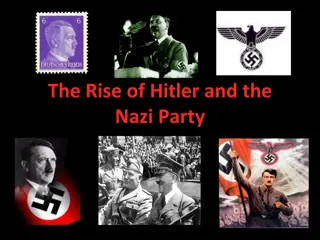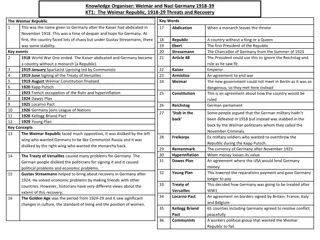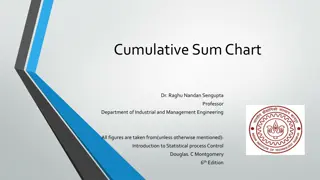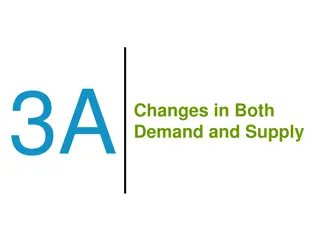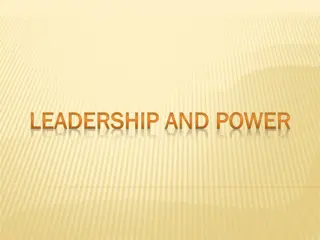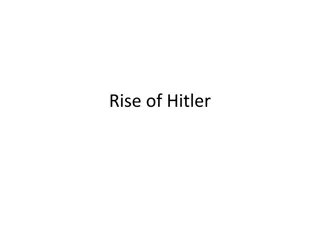The Nazi Rise to Power: Key Events and Strategy Shifts
The Nazi rise to power between 1929-1933 is outlined through key events, including their two-pronged strategy of attracting support while targeting enemies, such as Communists and Jews. The collapse of the Mueller coalition post the Wall Street Crash and the deepening social and economic conditions of 1930 further contributed to Hitler's electoral success in the breakthrough year of 1930.
Download Presentation

Please find below an Image/Link to download the presentation.
The content on the website is provided AS IS for your information and personal use only. It may not be sold, licensed, or shared on other websites without obtaining consent from the author.If you encounter any issues during the download, it is possible that the publisher has removed the file from their server.
You are allowed to download the files provided on this website for personal or commercial use, subject to the condition that they are used lawfully. All files are the property of their respective owners.
The content on the website is provided AS IS for your information and personal use only. It may not be sold, licensed, or shared on other websites without obtaining consent from the author.
E N D
Presentation Transcript
The Nazi rise to power 1929-33 The following slides list the key events.
Nazis between 1924 and 1929 After Munich Putsch, a change of strategy from revolutionary to constitutional approach. Try to attract middle class 1928 Nazis 2.6% of vote 14 seats so very much a fringe party. The Nazi party try to target all social groups. This makes them different from almost every other political party in Germany. Most parties go after one sector e.g. SPD/CPD go after working class; NVDP go after landowners and some peasants; BVP and Z go after Catholics Nazis try to be a VOLKSPARTEI a party that represent all the people.
Two pronged strategy Nazis adopt a two pronged strategy tried to attract support from all groups (a volskpartei) BUT ALSO identifies enemies of the people : Especially: Communists and Jews. Communists were a handy target because everyone was united in fearing/hating them. They would be the first to be targeted in the new Reich (after Reichstag fire). Joseph Goebbels in charge of Propaganda . Very clever Supported by Alfred Hugenberg leader of DNVP and the Rupert Murdoch of his day gives Hitler/Goebbels access to his cinematic resources
1929-30 After Wall Street Crash The Mueller coalition (grand coalition) collapses in March 1930 over question of how to deal with the economic problems. Should Germany put more investment into welfare (supported by SPD) or should it cut welfare and avoid dangers of hyperinflation (Z)? No coalition support so if Mueller wants to remain chancellor he needs Hindenburg s support and article 48 if he is going to get laws passed. Hindenburg says no Reason: Mueller is socialist. Hindenburg appoints Bruning instead.
Social and Economic Conditions 1930 The consequences of the WSC deepen deep depression. Why does this matter? Because 1. Second economic crisis in 5 years makes people blame democracy 2. coalition government means that no one party is to blame but all politicians. 3. Hitler says he is going to do away with politicians! 4. Hitler s predictions about Weimar economic dependency upon ~America appears to have been fulfilled.
1930 breakthrough year September election called result big success for the Nazi party. This is their breakthrough. Ideology hasn t changed BUT the country has thanks to economic crisis. Nazi electoral popularity shoots up with the Wall Street Crash. They go from having 2.6% of the vote to 18% in 1930. (107 seats) They are the 2ndbiggest party after the SPD.
1931-32 The social and economic crisis only deepens 5 German banks fail. By January 1932 Unemployment peaks at 6.1 million. This is good for the Nazis because: Workers and unemployed flock to Communist party and SPD; Nazi party become the party to which middle class voters turn when they fear the SPD and CPD.
1932 year of 3 elections The first two go exceptionally well for Hitler and the Nazis: April Presidential election (Hindenburg wins, Hitler is second with 37% of vote) July Reichstag election Nazis win 37% of vote
Hindenburg appoints von Papen Bruning resigns when Hindenburg refuses to back his plans for bankrupt Prussian farms (he wanted to turn them into allotments for unemployed workers) Democracy is already dead at this point Hindenburg appoints Von Papen as chancellor He is another Catholic so should have the support of Zentrum He is also a Prussian Junker! Right wing and dictatorial abolishes the Landtag government of Prussia and rules it directly!
Von Papen as Chancellor 1932 Von Papen asks Hitler to join his cabinet (he wants Hitler s popular support he wants to harness Hitler s strengths as a demagogue) Von Papen believes that Hitler might win over the working class away from communism But Hitler refuses a position on the cabinet unless he is made chancellor. Instead von Papen makes a deal with the Nazis Hitler and Nazis won t oppose von Papen so long as latter lifts ban on the bronwshirts (SA)
Von Schleichers month in power Von Papen calls an election but does not get the popular support he expects (for Zentrum). But he isn t the only one that does badly November 1932 Nazi support drops from37 to 33.1% This has several key consequences: Hitler faces disquiet from within the party. Many Nazis think that their chance has gone. Another of Hindenburg s cronies General Von Schleicher engineers his own appointment as chancellor He tries to get Gregor Strasser a left-wing Nazi to join him as vice-chancellor. Hitler says no to this and Schleicher s attempted coalition of far right middle class and far left Nazi party collapses after a month.
January 1933 Von Papen persuades Hindenburg that he (von Papen) could control Hitler even if Hitler were made chancellor. Hindenburg finally agrees.. So Hitler gets his dearest wish and leads a cabinet packed with conservatives. There are only two other Nazis in the cabinet Goering (without portfolio) and Wilhelm Frick who is put in charge of the police. This last position is highly significant. It means that the Nazis control the police!
Review of Nazi electoral fortunes 1928 2.6% 1930 18% 1932 March This is a presidential election Hindenburg wins. BUT Hitler wins 37% of vote. 1932 July REICHSTAG election Nazis become largest party 37% Hindenburg refuses to make Hitler Chancellor Why? Because he hates him. 1932 November REICHSTAG election Nazi vote falls 33.1% Von Papen is replaced by Von Schliecher
